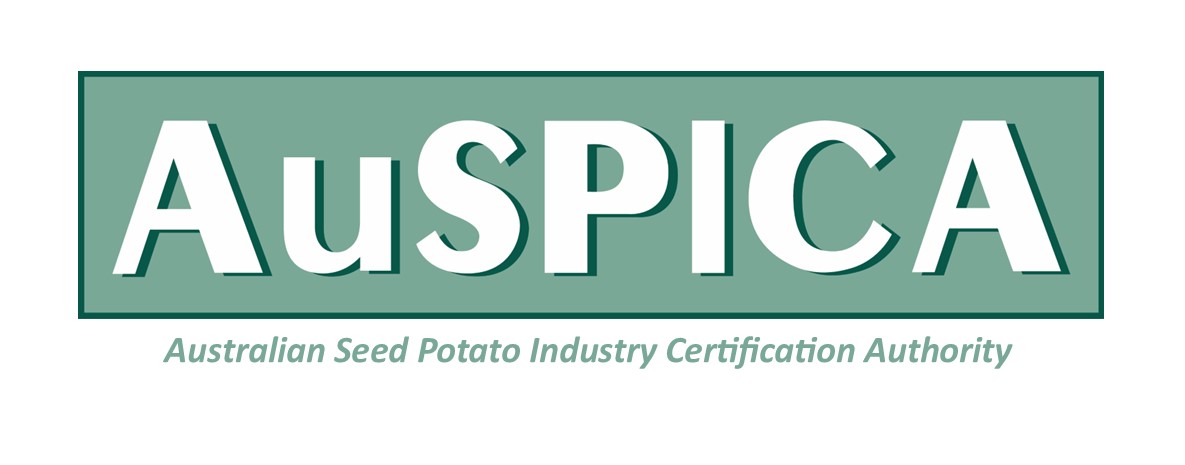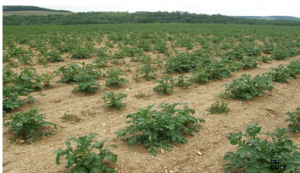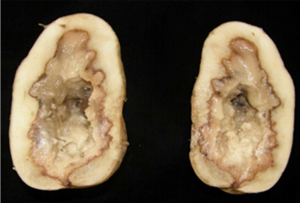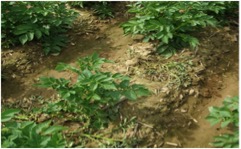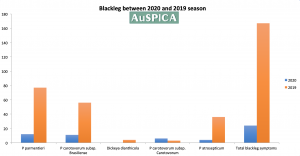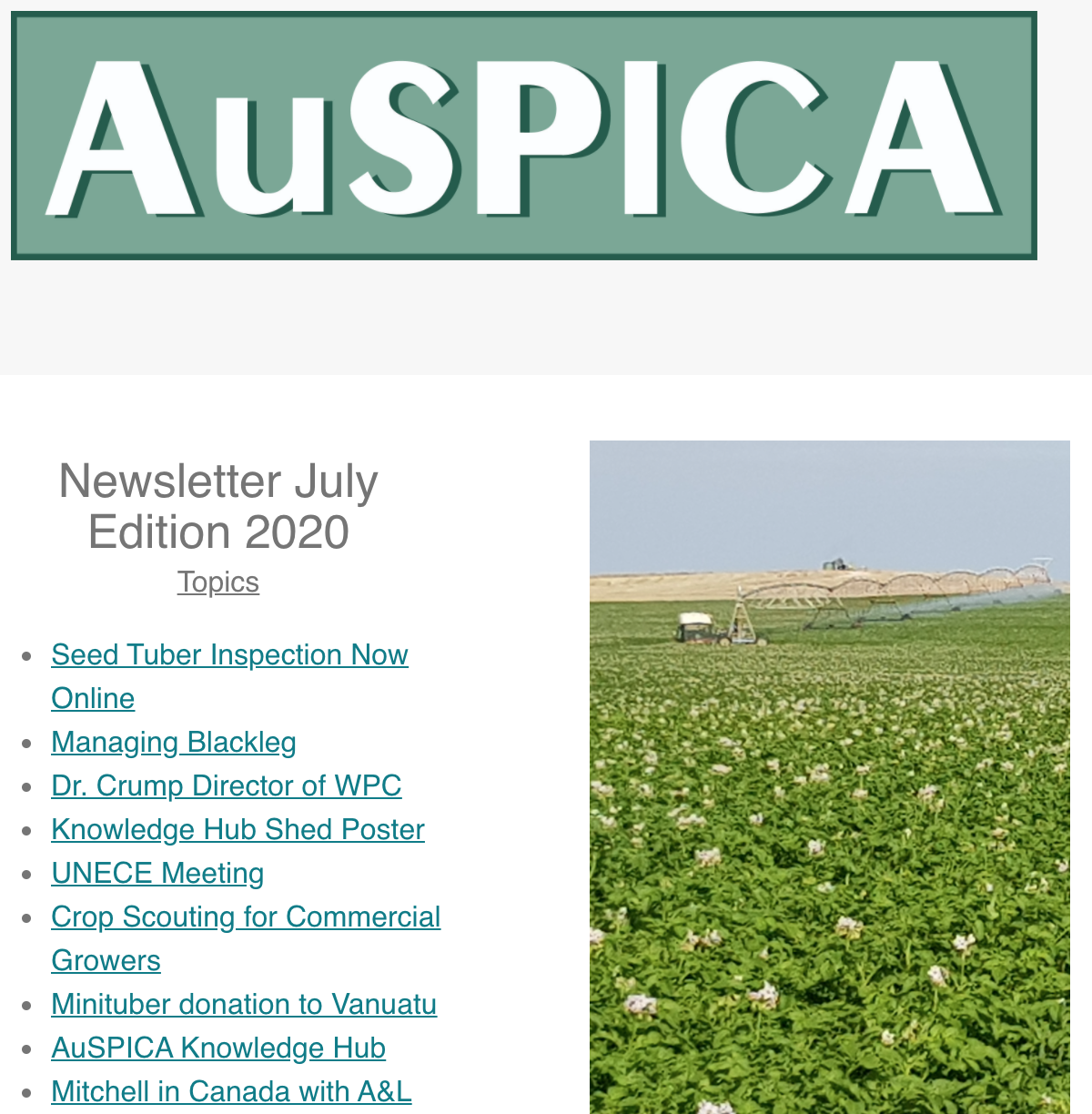What is the risk posed by blackleg?
For many years blackleg has been successfully managed through the seed certification Scheme. The detection of 3 new species of bacteria that can cause disease and subsequently significant crop loss demanded that AuSPICA take a fresh approach and review of policy in relation to blackleg.
In 2018/19 season, AuSPICA identified the occurrence of several new bacterial pathogens associated with the disease complex commonly known as blackleg of potatoes. In some cases, blackleg had caused significant crop loss of up to 40% and, in other cases, tuber rots were observed. This prompted the AuSPICA Board to take immediate action to mitigate the risk posed by the new bacterial pathogens.
It's all a load of rot!
Blackleg disease is a serious disease that can cause significant economic loss for potato growers. Widespread crop losses can occur unless the levels of blackleg pathogen in seed stocks is minimised. Symptoms include severe wilting of crops, tuber rots in the field and store and, poor performing seed quality.
New species recently detected in Australia are more suitable to our climatic conditions and can be devastating with crop losses of up to 90%, as reported overseas.
Images from Steven B Johnson, examples of Blackleg from United States of America
Is there a cure?
Other than cultural management options, there is no pesticide available to combat blackleg in potatoes.
What varieties are resistant to Blackleg?
Blackleg can infect any potato variety as there are no known resistant varieties. As a result planting clean certified seed is the most important method to limit Blackleg.
What are the new pathogens in Australia that can cause Blackleg?
- Dickeya dianthicola (DD)
- Pectobacterium caratovorum brasiliense (PCB)
- Pectobacterium parmentieri (PP)
Are there pathogens that cause blackleg that Australia does NOT HAVE?
Dickeya solani is a major cause of the disease in Europe, fortunately it is not known to occur in Australia. D. solani is more aggressive than any of the other blackleg pathogens and even a low level of the bacteria can cause severe disease and crop loss. AuSPICA has developed a diagnostic preparedness strategy for this pathogen. This will enable a rapid assessment of your crop to occur, if required.
What has AuSPICA done to address Blackleg in the seed Scheme?
- Reduced the total tolerance of Blackleg in the Scheme
- Adopted a zero tolerance specifically to the pathogen dianthicola
- Instigated the need for mandatory laboratory tests of all suspicious symptoms of blackleg to support visual seed crop assessments.
In addition to D. dianthicola, the tolerance for the old Blackleg has been revised to include the additional new Blackleg species, Pectobacterium parmentieri (PP), Pectobacterium carotovorum brasiliense (PCB). New tolerances are as follows:
A risk mitigation pathway was identified from the surveillance data in 2018/19. This pathway found that a specific line of seed coming from Tasmania was infected with D. dianthicola. To mitigate the risk of D. dianthicola entering the AuSPICA scheme, all Black Label seed from Tasmania is required to have a 400-tuber laboratory test to provide evidence of the absence of D. Dianthicola. A copy of the laboratory report will need to be forwarded to AuSPICA when crops are submitted for certification.
Crop rotations with other crops that are not Blackleg hosts.
AuSPICA has for many years restricted the production of seed potato crops on fields that have a recent history of growing flower bulbs. This is even more critical now as flower bulbs have been found to be a potential pathway for many disease pathogens which affect potatoes, including the new species of Blackleg bacteria. Hence, the question of flower bulbs in previous cropping history will continue to remain an important question when submitting seed certification application forms.
So, why focus on Dickeya dianthicola?
Firstly, D. dianthicola is not widespread across the current seed potato production regions and being aware of the pathogen means that we, as an industry, can take action to prevent its spread.
AuSPICA has adopted a zero tolerance to the pathogen D. dianthicola due to the significance of the pathogen and the associated crop loss reported overseas. The zero-tolerance approach aligns with the blackleg tolerances in the Western Australian seed Scheme.
Secondly, D. dianthicola is a seed-transmitted pathogen that has the potential to multiply quickly and spread through infested seed stocks. Therefore, maintaining clean certified seed stock is key to the control of this disease.
Why a 400-tuber laboratory test for Dickeya dianthicola?
D. dianthicola can be asymptomatic meaning that the disease symptoms may not be obvious, especially in cooler climates. The reason the sample size is required to be 400 is that experiments have shown that 400-tubers is the minimum quantity of tubers required to be able to detect the disease. With a 400-tuber test, there is a 95% chance of the disease being detected if it is present at a 1% level in the seed lot. A sample size smaller than 400 has a very low probability of detecting the disease D. dianthicola. Smaller samples would not provide a robust test, and not provide confidence of disease absence.
D. dianthicola, as with other Blackleg pathogens, increases during the multiplication of seed stocks. The multiplication can occur rapidly. Hence, it is more likely for the pathogen to be present at higher generations.
Once an infested seed stock is graded, harvested, or cut using common machinery there is a chance of transferring the bacteria to other seed stocks using the same machinery, and thereby contaminating entire seed farms.
What can I do on-farm to reduce the risk of Blackleg?
The best way to reduce your risk of Blackleg, is by minimising the chance of the disease pathogens from entering your farm. The use of clean certified seed supported with robust laboratory diagnostics and an on-farm hygiene program are all key in the ongoing management of this disease.
Don’t plant a problem!
Diseased plants can be rogued provided all plant parts including tubers are removed from the field however, in some cases, potato tubers can be asymptomatic but still harbor the bacteria causing spread of the disease.
Early success
During the 2019/2020 season crop inspections, AuSPICA collected a total of 24 plant samples that had symptoms of the new blackleg disease. All of these were negative to D. dianthicola (DD). Of the tested samples, 19 samples were tested for all 5 pathogens (specific analysis) and 5 samples were tested for D. dianthicola (DD) only.
Although it is early days, this result is fantastic news as it highlights the success of the blackleg intervention implemented by AuSPICA. However the industry as a whole must not become complacent. Awareness must be maintained and everyone must remain vigilant to prevent the spread of this disease and the potential for widespread crop loss.
AuSPICA will continue to monitor the disease and adjust policy as required to ensure we best manage the disease within the seed scheme.
